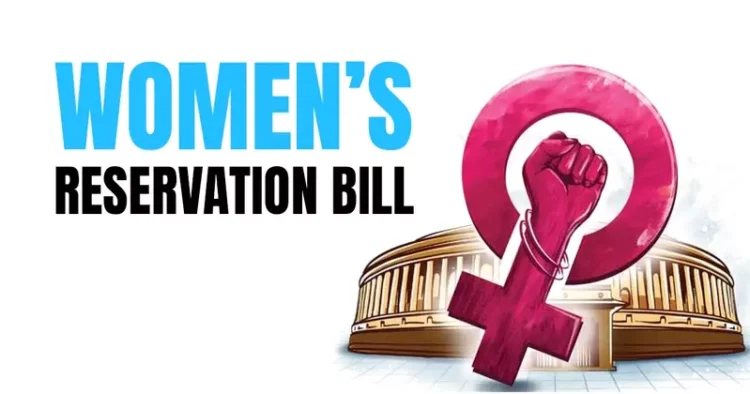The long-pending demand from women’s rights groups aims to rectify the underrepresentation of women in government despite constituting half of the nation’s population. The women’s reservation bill outlines a phased approach for its implementation over 15 years, heralding a potential transformation in Indian politics.

Addressing the Critical Need for Representation of Women
Advocates of the bill underscore the imperative of achieving equitable representation for women in government. Despite constituting half of the population, women remain underrepresented in government at all echelons. This reservation bill aims to rectify this imbalance by amplifying women’s voices in the decision-making processes.
The bill specifies that the reservation for women will cease to have effect “on the expiration of a period of fifteen years from such commencement” of the Act. pic.twitter.com/Re1nAOjWrU
— Mohit Singh (@coolindian) September 20, 2023
Phased Implementation in Over 15 Years
The bill delineates a phased approach to implement the reservation over a 15-year period. In the initial phase, 33 per cent of seats in the Lok Sabha and state legislative assemblies will be designated for women. Subsequently, this reservation will extend to 33 per cent of seats in the Union Cabinet and state cabinets. Finally, in the third phase, 33 per cent of seats in all government positions will be reserved for women.
‘Narishakti Vandan Adhiniyam’ and Its Distinctive Attributes
Union Law Minister Arjun Ram Meghwal has presented a draft law titled ‘Narishakti Vandan Adhiniyam.’ In essence, the bill aspires to facilitate enhanced participation of women in state and national-level policymaking. Prime Minister Narendra Modi, addressing this matter in his inaugural speech at the new Parliament building, emphasized its long-pending nature, highlighting the government’s earnest desire for increased female involvement in the nation’s developmental endeavors.
Nonetheless, the bill faces several hurdles before becoming law, including garnering political consensus, conducting a census, and undertaking the delimitation process. According to Article 82 of the Constitution, as amended in 2002, delimitation can be carried out based on the first Census conducted after 2026.
While the Bharatiya Janata Party (BJP) has praised the bill as historic, acknowledging the visionary leadership of Prime Minister Modi, other parties, including the Congress, have viewed it skeptically, perceiving it as an electoral promise ahead of the 2024 Lok Sabha elections.
According to the bill, one-third of the SC/ST quota will be reserved for women belonging to the Scheduled Castes and Scheduled Tribes. pic.twitter.com/7x7T6lSEdc
— Mohit Singh (@coolindian) September 20, 2023
Reservation for SC/ST Women
As per the provisions of the bill, one-third of the SC/ST quota will be specifically earmarked for women from the Scheduled Castes and Scheduled Tribes. This allocation will be made in accordance with the amendments proposed under Article 330 of the Constitution. However, it’s worth noting that the bill does not address the reservation of seats for women belonging to the Other Backward Castes (OBC), which has sparked discussions about the need for broader inclusivity in the legislation.
Key Details of the Bill
- The bill proposes to reserve 33 per cent of seats in the Lok Sabha and all state legislative assemblies for women.
- The seats would be reserved for women of all castes and religions.
- The reservation would be implemented in phases over a period of 15 years.
- The bill also proposes to reserve 33 per centof seats in the Union Cabinet and state cabinets for women.
- The bill also proposes to reserve 33 per cent of seats in all government jobs for women.
Click here to read all the points pertaining to Women’s Reservation Bill
Potential Benefits of the Women’s Reservation Bill
- It would increase the representation of women in government.
- It would give women a voice in the decision-making process.
- It would lead to more gender-sensitive policies and programs.
- It would empower women and girls.
The ‘Narishakti Vandan Adhiniyam’ has ignited a national conversation about gender representation in politics, emphasizing the importance of diverse voices and perspectives in shaping India’s future. It calls for a robust, informed discussion, enabling citizens to weigh the arguments carefully and arrive at an enlightened stance on this vital legislation.



















Comments